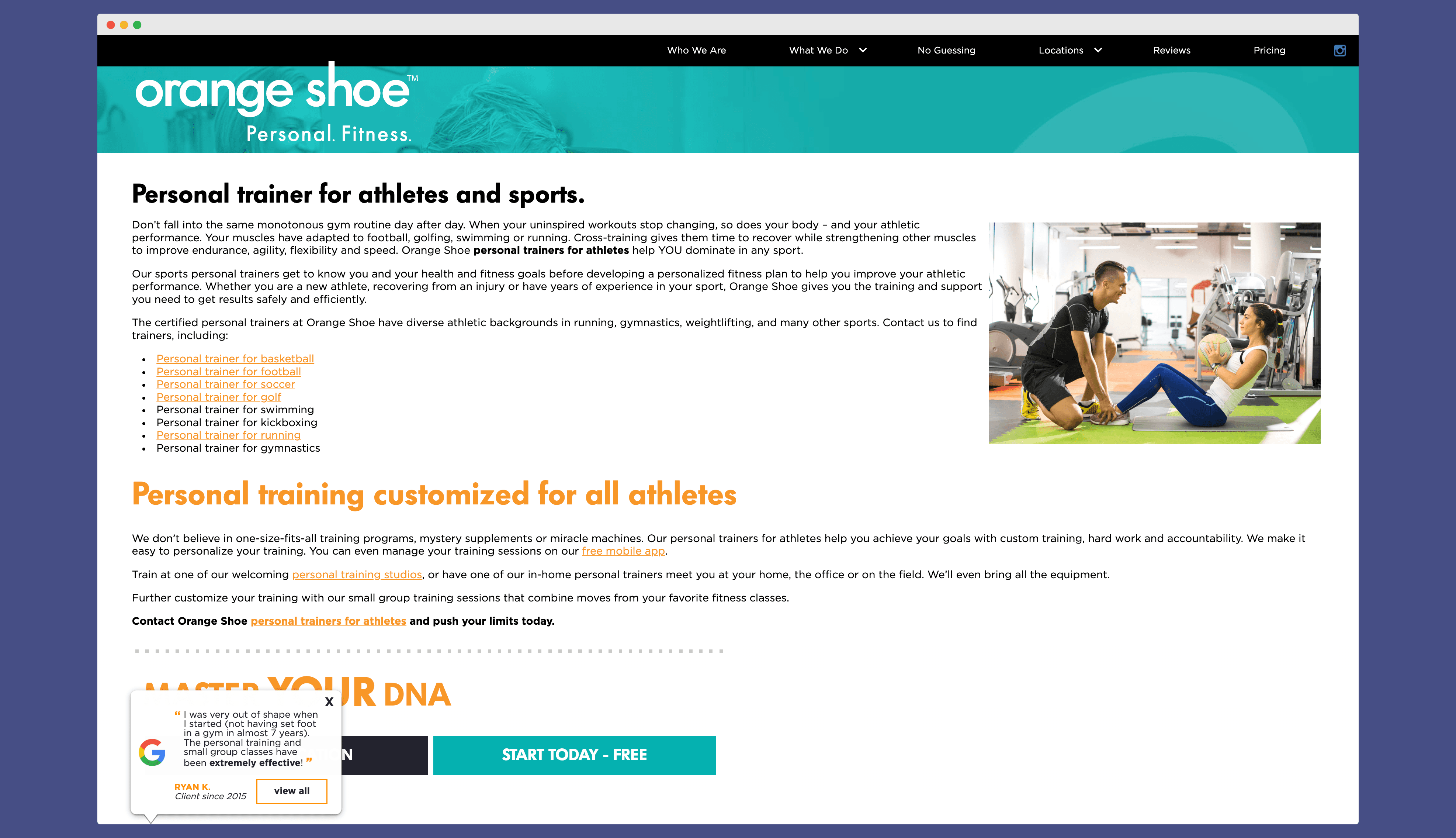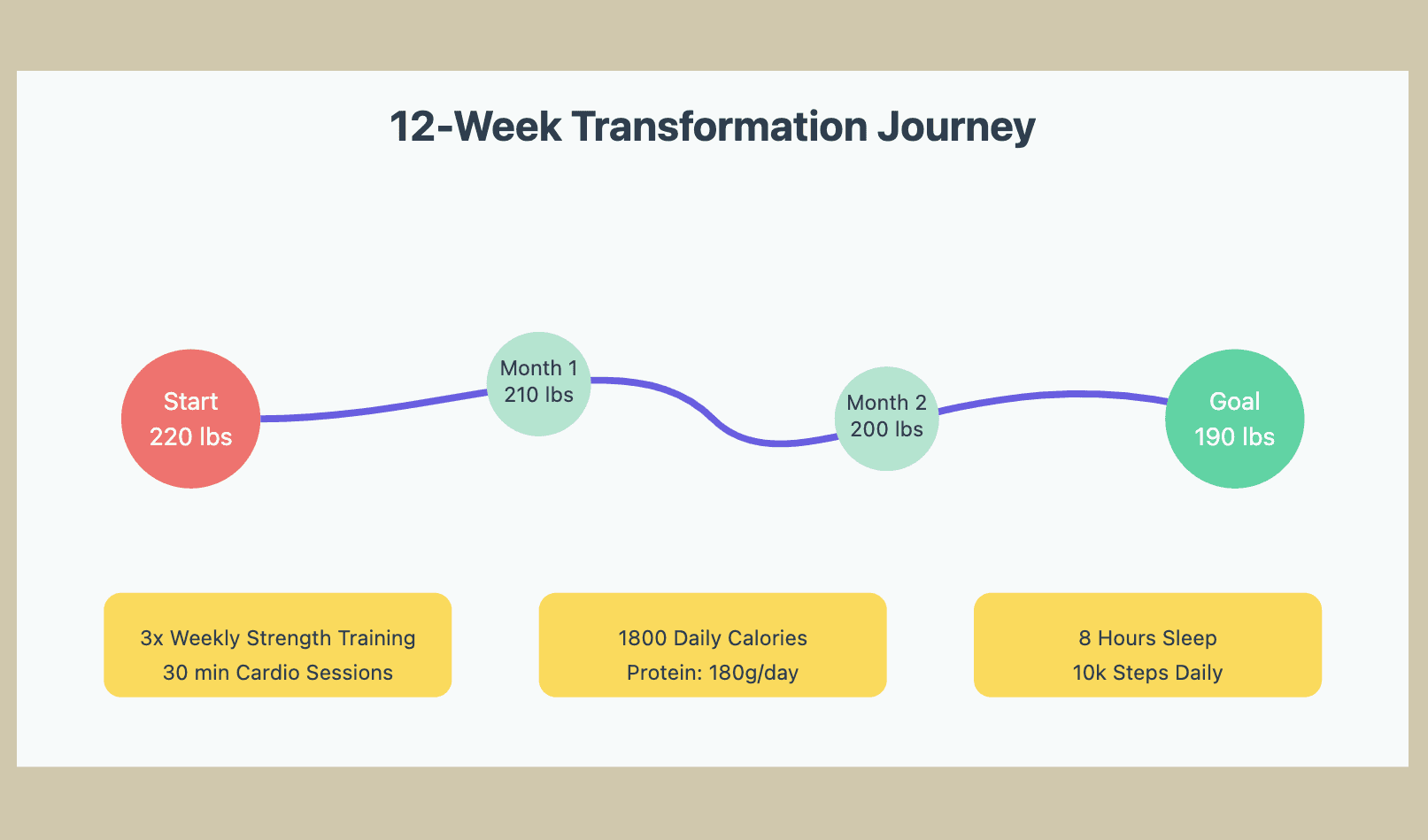How to Become an Online Fitness Coach: A Step-by-Step Guide
How to Become an Online Fitness Coach: A Step-by-Step Guide



Introduction
Introduction
So, you’re thinking about starting a career as an online fitness coach? Excellent choice. With fitness moving online and people swapping crowded gyms for virtual sessions, now’s a perfect time to jump in.
(According to google search trends)

Becoming an online fitness coach means you get to help people reach their fitness goals, on your own terms. And the best part? You’re no longer limited by location—clients from all over the world can be just a click away.
In this step-by-step guide, we’ll walk you through everything you need to get started, from picking your niche to finding clients to growing your online fitness coaching business.
So, you’re thinking about starting a career as an online fitness coach? Excellent choice. With fitness moving online and people swapping crowded gyms for virtual sessions, now’s a perfect time to jump in.
(According to google search trends)

Becoming an online fitness coach means you get to help people reach their fitness goals, on your own terms. And the best part? You’re no longer limited by location—clients from all over the world can be just a click away.
In this step-by-step guide, we’ll walk you through everything you need to get started, from picking your niche to finding clients to growing your online fitness coaching business.
Contents
Boost your business visibility to thousands of engaged readers!
Get Featured on 100+ pages across the FounderNoon website.
One month stretch ⇢ $100
Three-month stretch ⇢ $250
Boost your business visibility to thousands of engaged readers!
Get Featured on 100+ pages across the FounderNoon website.
One month stretch ⇢ $100
Three-month stretch ⇢ $250
Contents
Step 1: Define Your Niche and Fitness Goals
Step 1: Define Your Niche and Fitness Goals
When you’re starting an online fitness business, the first question is: Who do you want to help? Narrowing down your focus makes you stand out in a crowded market and attracts clients who need exactly what you offer.
Why a Niche Matters
Imagine if you were searching for a coach. Would you rather go to someone who’s just a “fitness trainer” or someone who’s an expert in, say, weight loss for new moms? Picking a specific niche means you can offer unique insights and tailored advice, which is a big draw for clients. Some ideas include:
Weight loss for busy professionals
Muscle building for beginners
Fitness programs for seniors
Virtual fitness coaching for athletes
(An example of a niche fitness training company)

When you’re clear on your niche, you’ll naturally attract potential clients who feel like your service is designed just for them.
Set Clear Fitness Goals for Your Clients
Clients love knowing you’re there to help them reach a specific outcome. Are you all about strength training, fat loss, or injury recovery? Outline what your ideal client can expect to achieve with you. Setting fitness goals keeps clients motivated and helps you structure your coaching program to deliver results.
(See example below)

When you’re starting an online fitness business, the first question is: Who do you want to help? Narrowing down your focus makes you stand out in a crowded market and attracts clients who need exactly what you offer.
Why a Niche Matters
Imagine if you were searching for a coach. Would you rather go to someone who’s just a “fitness trainer” or someone who’s an expert in, say, weight loss for new moms? Picking a specific niche means you can offer unique insights and tailored advice, which is a big draw for clients. Some ideas include:
Weight loss for busy professionals
Muscle building for beginners
Fitness programs for seniors
Virtual fitness coaching for athletes
(An example of a niche fitness training company)

When you’re clear on your niche, you’ll naturally attract potential clients who feel like your service is designed just for them.
Set Clear Fitness Goals for Your Clients
Clients love knowing you’re there to help them reach a specific outcome. Are you all about strength training, fat loss, or injury recovery? Outline what your ideal client can expect to achieve with you. Setting fitness goals keeps clients motivated and helps you structure your coaching program to deliver results.
(See example below)

Step 2: Get the Right Qualifications and Certifications
Step 2: Get the Right Qualifications and Certifications
Now, let’s get real—having qualifications is important. It doesn’t just add credibility but also ensures you have the knowledge to keep your clients safe.
Choosing the Right Certification
Several organizations offer certifications for fitness professionals, like NASM (National Academy of Sports Medicine) and ACE (American Council on Exercise). These courses cover essentials like anatomy, nutrition, and coaching techniques. They also keep you up-to-date on fitness trends and methods, which is crucial when you’re building a long-term online fitness coaching business.
Add Extra Skills to Stand Out
Consider taking courses in related areas like nutrition or mental coaching. Clients appreciate an online fitness coach who knows a bit about meal planning or can help them with goal-setting beyond fitness.
Now, let’s get real—having qualifications is important. It doesn’t just add credibility but also ensures you have the knowledge to keep your clients safe.
Choosing the Right Certification
Several organizations offer certifications for fitness professionals, like NASM (National Academy of Sports Medicine) and ACE (American Council on Exercise). These courses cover essentials like anatomy, nutrition, and coaching techniques. They also keep you up-to-date on fitness trends and methods, which is crucial when you’re building a long-term online fitness coaching business.
Add Extra Skills to Stand Out
Consider taking courses in related areas like nutrition or mental coaching. Clients appreciate an online fitness coach who knows a bit about meal planning or can help them with goal-setting beyond fitness.
Step 3: Create a Coaching Program and Define Your Online Services
Step 3: Create a Coaching Program and Define Your Online Services
Let’s talk about how you’ll actually deliver your coaching. A structured coaching program and a few well-thought-out services can help set you apart.
Designing Your Coaching Program
Your coaching program is where the magic happens! Start by mapping out a program that fits your niche. For example, if you’re working with clients focused on weight loss, break down your program into manageable steps. A program might look like:
Initial assessment – Evaluate their current fitness level, goals, and lifestyle.
Personalized workout plans – Tailor workouts to their needs, with options for at-home or gym setups.
Nutrition guidance – Simple meal plans or advice (if you’re certified in this area).
Check-ins and progress tracking – Keep them motivated and accountable.
Types of Online Services You Can Offer
Think of your services like a menu. Some options you can offer include:
One-on-one coaching: Personalized sessions over Zoom or similar platforms.
Group training sessions: Lower price point, great for beginners, and you can handle multiple clients at once.
Subscription programs: Monthly plans with workouts and tips delivered straight to clients’ inboxes.
On-demand training videos: Pre-recorded sessions that clients can access anytime.
Let’s talk about how you’ll actually deliver your coaching. A structured coaching program and a few well-thought-out services can help set you apart.
Designing Your Coaching Program
Your coaching program is where the magic happens! Start by mapping out a program that fits your niche. For example, if you’re working with clients focused on weight loss, break down your program into manageable steps. A program might look like:
Initial assessment – Evaluate their current fitness level, goals, and lifestyle.
Personalized workout plans – Tailor workouts to their needs, with options for at-home or gym setups.
Nutrition guidance – Simple meal plans or advice (if you’re certified in this area).
Check-ins and progress tracking – Keep them motivated and accountable.
Types of Online Services You Can Offer
Think of your services like a menu. Some options you can offer include:
One-on-one coaching: Personalized sessions over Zoom or similar platforms.
Group training sessions: Lower price point, great for beginners, and you can handle multiple clients at once.
Subscription programs: Monthly plans with workouts and tips delivered straight to clients’ inboxes.
On-demand training videos: Pre-recorded sessions that clients can access anytime.
Step 4: Build Your Online Presence and Brand
Step 4: Build Your Online Presence and Brand
Now, how do you get noticed? By building a brand that speaks to your audience.
Setting Up Your Brand
Your brand is more than just a logo—it’s how you connect with people. Choose a name, colors, and a vibe that fits your niche. If you’re coaching busy professionals, go for a polished, modern look. If you’re working with new moms, keep it friendly and supportive.
Creating an Engaging Website
A website isn’t optional. Think of it as your online storefront. Make sure it has:
An About page: Tell your story and why you’re passionate about helping people with fitness.
Service details: Explain what each service includes, how much it costs, and how clients can sign up.
Client testimonials: Show real results from your past clients.
Blog or resources section: Share useful content, like tips on weight loss, workout routines, and fitness advice.
(See example below)

Social Media: Where the Magic Happens
Social media is where you’ll find most of your clients. Share tips, workouts, client stories, and more to attract followers who might turn into coaching clients. Consistency is key—try to post regularly and respond to comments to build relationships.
Now, how do you get noticed? By building a brand that speaks to your audience.
Setting Up Your Brand
Your brand is more than just a logo—it’s how you connect with people. Choose a name, colors, and a vibe that fits your niche. If you’re coaching busy professionals, go for a polished, modern look. If you’re working with new moms, keep it friendly and supportive.
Creating an Engaging Website
A website isn’t optional. Think of it as your online storefront. Make sure it has:
An About page: Tell your story and why you’re passionate about helping people with fitness.
Service details: Explain what each service includes, how much it costs, and how clients can sign up.
Client testimonials: Show real results from your past clients.
Blog or resources section: Share useful content, like tips on weight loss, workout routines, and fitness advice.
(See example below)

Social Media: Where the Magic Happens
Social media is where you’ll find most of your clients. Share tips, workouts, client stories, and more to attract followers who might turn into coaching clients. Consistency is key—try to post regularly and respond to comments to build relationships.

















2,678+ people enjoy it
➤ Every week, we dig up stories of how regular people started and grew their businesses—
➤ Plus the marketing hacks that won them customers.
➤ Then, we share those insights with you.
➤ Every week, we dig up stories of how regular people started and grew their businesses—
➤ Plus the marketing hacks that won them customers.
➤ Then, we share those insights with you.
Step 5: Set Up Systems for Virtual Fitness Coaching
Step 5: Set Up Systems for Virtual Fitness Coaching
Once you have clients, you’ll need systems to keep things running smoothly. Setting up systems early makes it easy to manage your coaching business as it grows.
Tools for Coaching Sessions
Use platforms like Zoom or Google Meet for face-to-face training sessions. You can record these sessions (with permission) so clients can watch them later, which adds value to your service.
Scheduling and Payments
Set up online scheduling to make booking sessions easy for clients. Tools like Calendly or Acuity let clients see your availability and book directly, reducing back-and-forth emails. For payments, options like PayPal, Stripe, or Square are reliable choices for online fitness coaches.
Progress Tracking
Tracking your clients’ progress keeps them engaged and motivated. Use Google Sheets or fitness apps to log workouts, and encourage clients to update their progress after each session. Many fitness professionals find that visual progress, like charts or before-and-after photos, motivates clients to keep going.
Once you have clients, you’ll need systems to keep things running smoothly. Setting up systems early makes it easy to manage your coaching business as it grows.
Tools for Coaching Sessions
Use platforms like Zoom or Google Meet for face-to-face training sessions. You can record these sessions (with permission) so clients can watch them later, which adds value to your service.
Scheduling and Payments
Set up online scheduling to make booking sessions easy for clients. Tools like Calendly or Acuity let clients see your availability and book directly, reducing back-and-forth emails. For payments, options like PayPal, Stripe, or Square are reliable choices for online fitness coaches.
Progress Tracking
Tracking your clients’ progress keeps them engaged and motivated. Use Google Sheets or fitness apps to log workouts, and encourage clients to update their progress after each session. Many fitness professionals find that visual progress, like charts or before-and-after photos, motivates clients to keep going.
Step 6: Develop Marketing Strategies to Attract and Retain Clients
Step 6: Develop Marketing Strategies to Attract and Retain Clients
Marketing doesn’t have to be complicated. The goal is simple: get your name out there and keep clients coming back.
Finding Your Ideal Clients
Who are you trying to reach? Knowing your target clients helps you tailor your message. For example, if you’re working with new moms, create content that speaks to their needs, like short workouts they can do at home.
Social Media Marketing and Content Creation
Creating valuable content builds trust and attracts clients. Some ideas for content:
Workout tips: Quick routines they can try at home.
Client success stories: Share testimonials with before-and-after photos (with permission).
Behind-the-scenes: Show your own fitness journey, or a day in your life as a coach.
Building an Email List
An email list is gold for online coaches. Offer something free (like a workout guide or fitness checklist) in exchange for people’s emails. Then, use this list to send weekly tips, updates, and reminders about your services.
Retaining Your Clients
Keeping clients is just as important as finding new ones. Regular check-ins, personalized messages, and birthday shout-outs go a long way. Show them you’re invested in their progress, and they’re more likely to stay.
Marketing doesn’t have to be complicated. The goal is simple: get your name out there and keep clients coming back.
Finding Your Ideal Clients
Who are you trying to reach? Knowing your target clients helps you tailor your message. For example, if you’re working with new moms, create content that speaks to their needs, like short workouts they can do at home.
Social Media Marketing and Content Creation
Creating valuable content builds trust and attracts clients. Some ideas for content:
Workout tips: Quick routines they can try at home.
Client success stories: Share testimonials with before-and-after photos (with permission).
Behind-the-scenes: Show your own fitness journey, or a day in your life as a coach.
Building an Email List
An email list is gold for online coaches. Offer something free (like a workout guide or fitness checklist) in exchange for people’s emails. Then, use this list to send weekly tips, updates, and reminders about your services.
Retaining Your Clients
Keeping clients is just as important as finding new ones. Regular check-ins, personalized messages, and birthday shout-outs go a long way. Show them you’re invested in their progress, and they’re more likely to stay.
Step 7: Build and Launch Your Online Course (Optional)
Step 7: Build and Launch Your Online Course (Optional)
If you want to add a new revenue stream, consider creating an online course.
Benefits of an Online Course
An online course is passive income. Once it’s set up, people can buy it anytime, even while you’re off coaching other clients. It’s a great way to serve people who aren’t ready for one-on-one coaching but still want guidance.
Structuring Your Course
Outline the main steps your clients need to reach their fitness goals. Your course could cover basic fitness concepts, nutrition tips, and a series of workouts for different levels. Platforms like Teachable and Thinkific make it easy to host and sell courses.
If you want to add a new revenue stream, consider creating an online course.
Benefits of an Online Course
An online course is passive income. Once it’s set up, people can buy it anytime, even while you’re off coaching other clients. It’s a great way to serve people who aren’t ready for one-on-one coaching but still want guidance.
Structuring Your Course
Outline the main steps your clients need to reach their fitness goals. Your course could cover basic fitness concepts, nutrition tips, and a series of workouts for different levels. Platforms like Teachable and Thinkific make it easy to host and sell courses.
Step 8: Tips for Scaling Your Online Fitness Coaching Business
Step 8: Tips for Scaling Your Online Fitness Coaching Business
Once you’re rolling, you might want to grow. Scaling your online fitness business doesn’t have to mean working more hours—it’s about being smarter with your time and offerings.
Upsell Additional Services
Offer add-ons like meal planning, personalized feedback, or one-on-one check-ins. Many clients are happy to pay for extra services, especially if they help them see better results.
Automate What You Can
Tools like email marketing software (Mailchimp, ConvertKit) can automate parts of your marketing. Scheduling software and payment processors reduce your workload. Automation frees you up to focus on creating more value for your clients.
Partner with Other Fitness Professionals
Consider collaborating with other coaches to create a joint program. You can also cross-promote each other’s services on social media, which helps you reach new audiences.
Once you’re rolling, you might want to grow. Scaling your online fitness business doesn’t have to mean working more hours—it’s about being smarter with your time and offerings.
Upsell Additional Services
Offer add-ons like meal planning, personalized feedback, or one-on-one check-ins. Many clients are happy to pay for extra services, especially if they help them see better results.
Automate What You Can
Tools like email marketing software (Mailchimp, ConvertKit) can automate parts of your marketing. Scheduling software and payment processors reduce your workload. Automation frees you up to focus on creating more value for your clients.
Partner with Other Fitness Professionals
Consider collaborating with other coaches to create a joint program. You can also cross-promote each other’s services on social media, which helps you reach new audiences.
Step 9: Measure Success and Continuously Improve
Step 9: Measure Success and Continuously Improve
The only way to get better is to keep learning. Track your success, ask for client feedback, and look for ways to improve.
Tracking Results
Check if your clients are hitting their fitness goals. If they’re not, it may be time to tweak your coaching program. Use metrics like weight loss, strength gains, or even how your clients feel overall.
Adapting to Trends
Stay up-to-date with fitness trends so your online coaching business stays relevant. Virtual fitness is always evolving, and clients appreciate a coach who brings fresh ideas.
The only way to get better is to keep learning. Track your success, ask for client feedback, and look for ways to improve.
Tracking Results
Check if your clients are hitting their fitness goals. If they’re not, it may be time to tweak your coaching program. Use metrics like weight loss, strength gains, or even how your clients feel overall.
Adapting to Trends
Stay up-to-date with fitness trends so your online coaching business stays relevant. Virtual fitness is always evolving, and clients appreciate a coach who brings fresh ideas.
Conclusion
Conclusion
So, there you have it! Becoming an online fitness coach isn’t just about workouts—it’s about creating a complete experience for your clients. From picking a niche and getting certified to building an online presence and scaling your business, there’s a lot that goes into making it a success. But the best part? You’re building something that genuinely changes lives.
Do me a favor and pass this on to a friend or share on X/reddit? It'll take just 20 seconds—this one took me about 12 hours to research and write 🫠
P.S. I’ve got a weekly newsletter where I share stories about founders who have started successful online businesses, growth strategies, and tips to start/grow your own business. I would love for you to join here
So, there you have it! Becoming an online fitness coach isn’t just about workouts—it’s about creating a complete experience for your clients. From picking a niche and getting certified to building an online presence and scaling your business, there’s a lot that goes into making it a success. But the best part? You’re building something that genuinely changes lives.
Do me a favor and pass this on to a friend or share on X/reddit? It'll take just 20 seconds—this one took me about 12 hours to research and write 🫠
P.S. I’ve got a weekly newsletter where I share stories about founders who have started successful online businesses, growth strategies, and tips to start/grow your own business. I would love for you to join here






